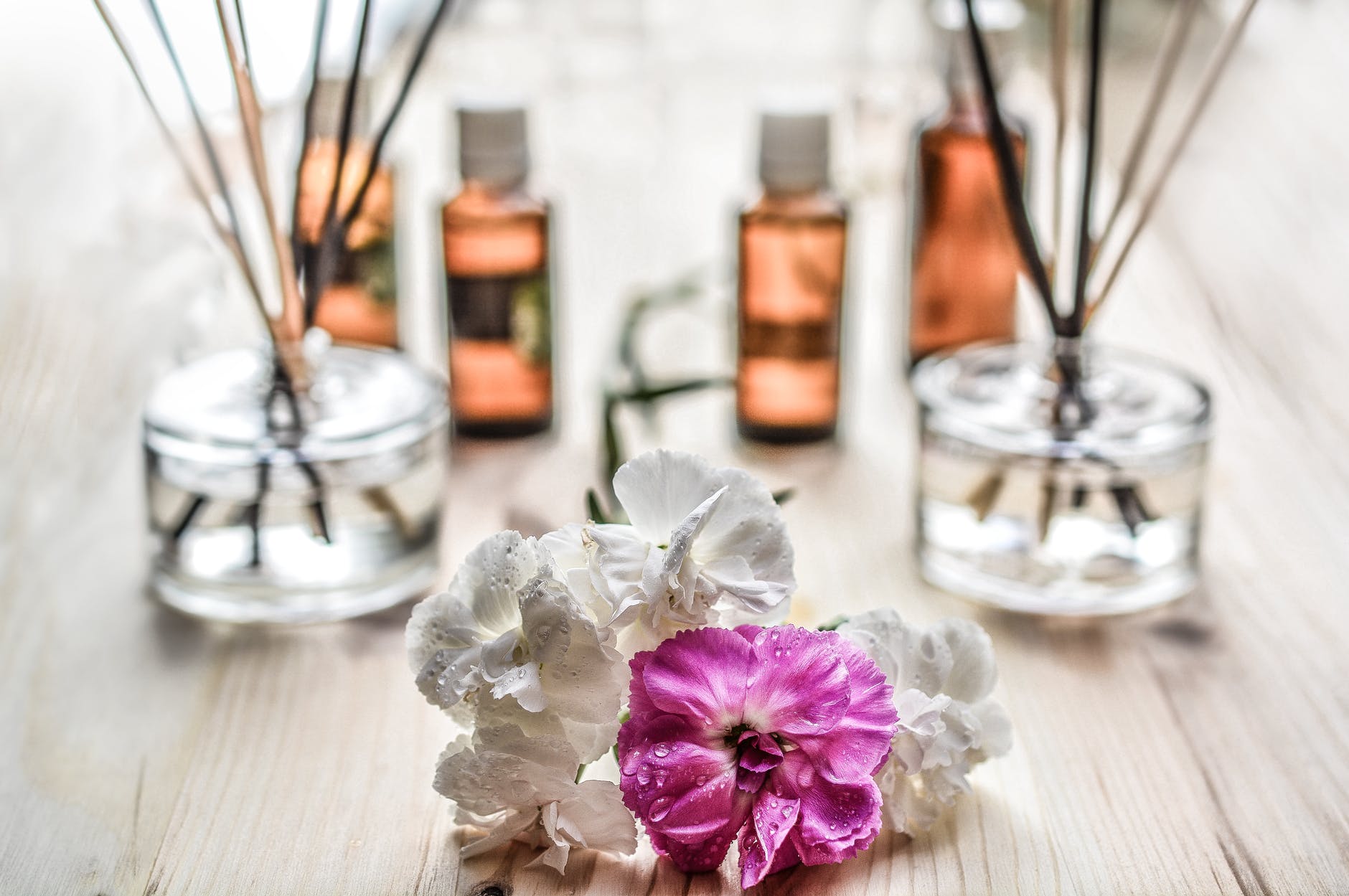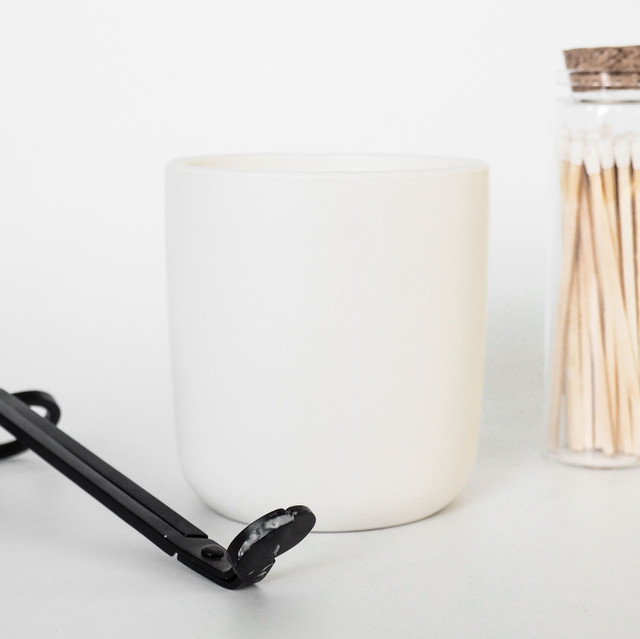Get out your lighters, folks, it’s candle burning season! I’m often in awe of the fact that a tiny flame and a bit of wax can envelope your whole house in the delightful aroma of baked goods or crisp pine…but did you know that the type of candle you burn matters? That’s right. Today’s blog is an important read, one that could change the way you light candles forever.

The Burning Question: are candles toxic?
People have always debated over the possible impact burning candles can have on your health. Some say burning candles can release harmful toxins into the air while others argue that the amount of toxins released through candle fumes are too minimal to do any real damage. So what’s the truth?
Candle Wicks Matter
Lead in Candle Wicks
According to Healthline’s article on candle burning, we don’t need to be concerned about lead in our candle wicks unless our candles are manufactured outside of the United States. The article claims, “In 2003, the U.S. Consumer Product Safety Commission (CPSC) voted to ban the sale and manufacture of candles with lead wicks. They also banned the import of lead-containing candles from other countries.”
Although the import of candles containing lead from other countries was banned, I would be careful when making any online purchases from companies whose credentials are questionable. This includes buying candles off of sites like Wish or even Amazon, where items are cheap, but quality is questionable. If a company is already trying to scam you into buying low quality products, they probably aren’t above bending other rules…ones that could potentially jeopardize your safety.
Cotton Candle Wicks
Our soy and beeswax candles have cotton wicks, which is the wick with the lowest risk of emitting toxins since cotton is a natural material. The soy candles have a traditional cotton wick, while the beeswax candles have a cotton ribbon wick which is a beautiful unique design, giving a wider flame with excellent scent throw.
Fragrance in Candles

Story time: once upon a time I came home with a name-brand candle and lit it right away because it was one of my favorite scents. That very night my younger brother just happened to have a case of extremely bloodshot eyes. What did my mother do? She instantly blamed my candle, blew it out and said, “These name brand candles smell good because they’re made to deodorize by covering up other smells, but that also means they’re loaded with toxins and allergens from paraffin wax and all the harsh chemical fragrances used.” This is the woman who told me peppermint essential oil could get rid of spiders, was she right about this too?
Well, she wasn’t right about my candle being the cause…turns out my brother had been using a popular mass-produced soap bar to wash his face and those harsh cleaning chemicals were doing the damage (obviously I need to introduce him to AVNS facial bars) but she still had a point…burning a candle made with fragrance that contains phthalates is not a great idea, no matter how good it smells.
What are Phthalates?
“Phthalates (pronounced THAL-ates) are a common class of chemicals used in consumer products. They’re used as a plasticizer to make plastic more flexible in products like toys, vinyl flooring, wall covering, vinyl mattress covers, shower curtains, and plastic food packaging. They’re used as solvents or dissolving agents in things like detergents and lubricating oils.”
-madesafe.org
Phthalates are also used as a scent carrier to make a scent last longer and are found in many beauty products. Unfortunately, when these chemicals come in contact with our bodies they can do damage to our internal organs. For this reason, all of our fragrance is phthalate-free.
What Are Types of Candle Wax and How Safe are They?
Paraffin Wax
“Paraffin wax (or petroleum wax) is a soft colorless solid derived from petroleum, coal or shale oil that consists of a mixture of hydrocarbon molecules containing between twenty and forty carbon atoms.”
-Wikipedia
Paraffin Candles vs. Soy Candles
According to the same Healthline article, while there is little to no evidence that burning paraffin wax releases large enough amounts of chemicals to pose a threat to human health, it is true that soy candles produce less soot and fewer chemicals making them a great alternative and just an awesome choice in general.
Is Smoke From Candles Harmful?

According to another Healthline article on the risks of smoke inhalation, “Inhaling harmful smoke can inflame your lungs and airway, causing them to swell and block oxygen. This can lead to acute respiratory distress syndrome and respiratory failure.” Of course, inhaling a little smoke may not have this effect, but limiting how much smoke you inhale is always a good idea even when it comes to candles.
Fun fact: The European Candle Association recommends using a candle snugger or dipping the wick in wax to extinguish a candle instead of blowing it out. They also say you should ventilate a room in which you have extinguished a candle for 10-15 minutes afterwards.
Are Natural Candles Better?
Ditch Paraffin forever because there are two fantastic alternatives to consider!
Soy Candles
Yes! I already talked a bit about the benefits of soy candles as opposed to paraffin. Soy candles are a great cost effective option for a clean burning candle which emits no toxins, carcinogens or pollutants, making it less likely to trigger allergies. Soy wax is water soluble which makes spills an easy clean-up with soap & water. We use only Non-GMO soy wax in our soy candles to ensure they are as safe as possible!
Beeswax Candles
Did you know that beeswax candles are actually a natural air-purifier? Beeswax is a fuel which produces negative ions when burned. These negative ions negate the positive charge of air contaminants such as bacteria, viruses, and allergens like dust and pollen, and the neutralized ions are sucked back into the burning candle or fall to the ground where they can be swept or vacuumed.
Our Soy and Beeswax candles are my-mom approved because they are safely scented with essential oils and phthalate free fragrances, and won’t make your younger brother’s eyes red…plus they smell amazing and burn slower and longer!
Much Love,
Nora


Pingback: Natural Products For Sensitive Skin | APPLE VALLEY NATURAL SOAP BLOG
Pingback: Essential Oils That Repel Bugs | APPLE VALLEY NATURAL SOAP BLOG